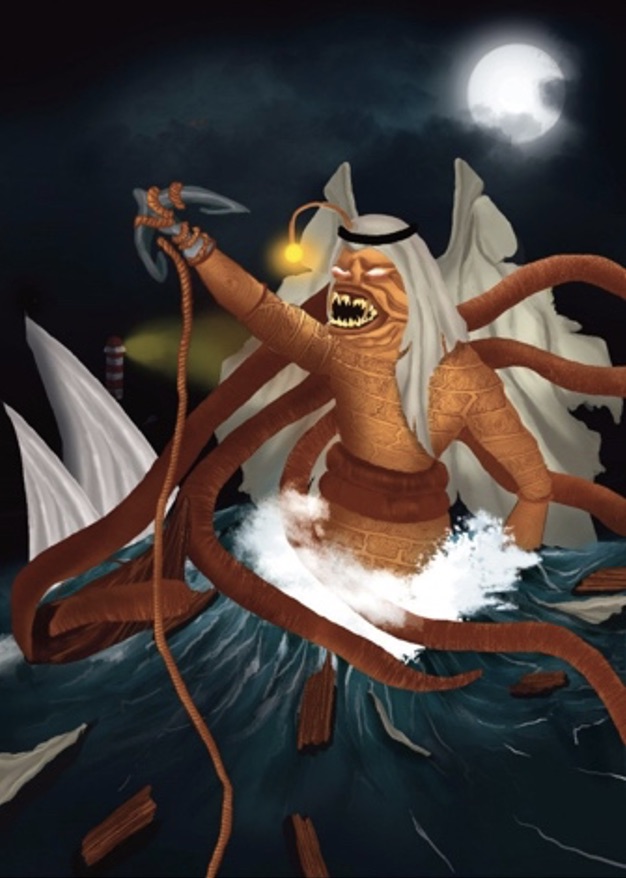Exhibition Breathes Life Into UAE Mythical Sea Figures
Student artists are exhibiting a series of designs based on mysterious sea tales that are part of the heritage and folklore of the United Arab Emirates.
The exhibition at Rawaq Gallery of Sharjah University's College of Fine Arts and Design is displaying art works inspired by 'Al-Wari', an Arabic language book of UAE sea folktales.
The book, by Dr. Abdulaziz Musallam, Executive Director of Sharjah Heritage Institute, chronicles stories about various mythical sea creatures that once were part of the sea-faring nation's popular folklore.
Pearling was the mainstay of the country's economy before the flow of oil royalties that transformed the nation into an urban society.
“The exhibition serves the purpose of reviving UAE's cultural heritage and folklore while also preserving them for future generations," said Madiha Jamil, a Visual Communications lecturer at the college.
Reading Musallam's popular book, the students were inspired by the mythical sea creatures and the role they played in a society which essentially relied on fishing and pearling for a livelihood prior to the discovery of oil almost half a century ago.


They studied how the author portrayed his main mythical figures and the type of descriptions and features he gave to them.
This helped them to re-envision the main details of the mythical sea figures in the book and portray them in their works with an aura of mysticism bearing some distinctive features of their own style and knowledge of digital painting, animation, and augmented reality.
“This project enabled both me and my students to delve deeply into UAE's cultural heritage. The more we explored, the more excited we became as we realized the potential for further exploration in this relatively untapped area," said Jamil.
The characters in these stories are an integral part of Emirati folklore, passed on through generations of people who worked in the sea, either as pearl divers or fishers, who believed that these creatures existed.
Even today, and despite the UAE turning into a modern society, with some of its metropolitans attaining worldwide fame like Dubai, there are many nationals in the country who still believe in the existence of these mythical sea figures.
The exhibition features animations of how these fabled sea creatures might have looked in a bid to reveal and showcase certain mystic qualities associated with each one of them, such as their size, sound, and supernatural ability.
The animations go hand in hand with the posters through augmented reality and viewers can have the visuals on their mobile phone via the Artivive app, even from the comfort of their homes.
“Our aim was to make these characters accessible to all," said Jamil.
The students were not given any instructions of how to perceive the designs of the fabled sea figures, the thing that helped them rely solely on their imagination and creativity to bring them to life.
“Two or three students repeated the same character, but they reimagined them in their own styles," said Jamil.
“Following the research phase, students developed mood boards inspired by the sea, created rough sketches, finalized character posters, animations, and an augmented reality experience," she said.
Among the mythical creatures attracting students is the famous Umm Al Duwais, a beautiful, irresistible character who lures men with her beauty and then transforms into a horrifying deadly monster with donkey feet, cat's eyes, hair as black as night and a hook-shaped hand.
“This was an enjoyable project that allowed me to explore a fascinating mythical figure and create compelling representation of her character," said Hessa Yousif Alzarooni, a student who designed the fabled figure Umm Al Duwais.
Other characters include the terrifying Khataf Rfay. The fabled creature looks like the sail of the ship but appears in the middle of the night as a monster to attack humans.
“Our work on this project allowed us to appreciate the richness of the cultural heritage of the UAE," said Jamil.

